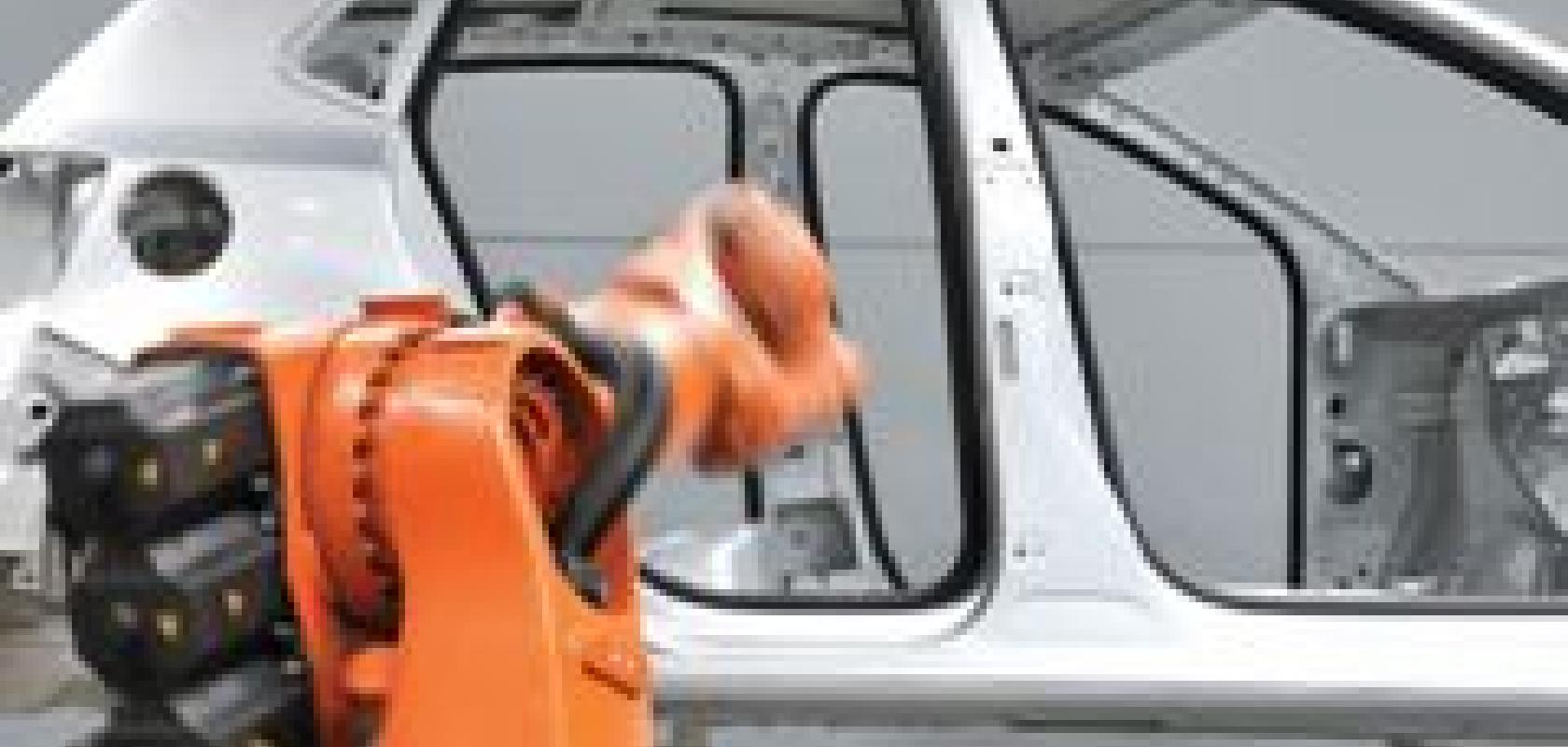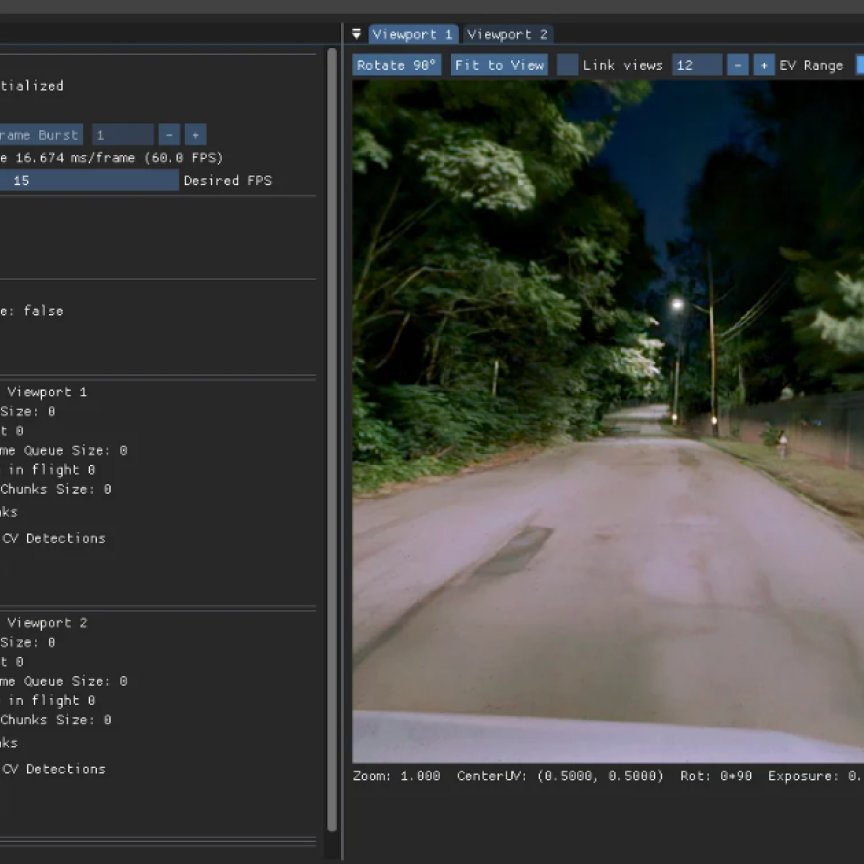Automation in a car factory can take the form of versatile robots or more dedicated pieces of equipment. One robot may perform several tasks on a stationary vehicle before the workpiece is moved to the next robot bay in the production line. Where more dedicated machines are used (a painting tunnel for example), the car may move steadily though the production line. Vision systems are important in both cases. Jean-Luc Grannec is business unit manager of Edixia, a subsidiary of the French Group Tiama responsible for supplying vision systems to the automotive industry. Using the process of fitting the doors onto the car as an example, Grannec cites the importance of vision in such a dynamic environment. ‘One of the most significant challenges manufacturers face when assembling the car is getting the components in the correct place,’ he says. ‘The tolerance required when fitting a door is a few tenths of a millimetre; the conveyors moving the car [through the production line] cannot achieve this accuracy. [Without machine vision], you can only achieve a window of probability that the part will be somewhere in the region of plus or minus three millimetres, and so you’ve already failed. On top of that, the robot may have a limit of repeatability of about 0.2mm, and the clamps gripping the door in the handling tool may also have a tolerance of 0.2mm.’ A vision system must be installed in parallel to a robot in order to monitor the distances between the car and the door at several stages in the joining process. ‘The same vision package could be used, say for laser cutting on the car, or any other process. You glue a reference point on the car, and you then know that each car coming off that production line has the cut in the same place relative to the reference point.’
Keeping in line
According to Grannec, robot control is an overarching aspect of all of the vision products Edixia supplies to the automotive industry, most of which are aimed at a very specific process within either the production of components or the assembly of the vehicle. He explains, for example, that fitting a door to a vehicle is a task that uses the company’s ‘gap and flush’ measurement system: ‘We install the [gap and flush systems] mainly in the Body in White area of the manufacturer’s plant,’ he says, referring to the stages of automotive production in which the bodywork (including all doors) is assembled, prior to other components being added (engine, chassis, wheels, etc.). ‘“Gap” is the number of millimetres between two metal sheets, and “flush” is the difference in their level,’ explains Grannec. ‘For this application we can provide fully automatic tunnels, so that the car just passes through without stopping, and when the car emerges from the tunnel, the line operators can access real-time information about which sections are within tolerance or otherwise. They can of course correct the car, but they can also keep track in real-time of any problems, for anything about to occur in the upstream processes,’ he explains. ‘This system could be installed in a tunnel, mounted on robots or [packaged] in an operator-held gun.’
At the Body in White stage, the manufacturers may also check the geometry of the car’s bodywork in its entirety: ‘In this case you don’t measure gaps and flushes between metal sheets, but you measure some points on the Body in White shape,’ explains Grannec, saying that x, y, and z measurements must be taken accurately, which is achieved through laser triangulation. Machine vision allows these dimensions to be measured within the production environment in-line, rather than checking a selection of the cars away from the production line: ‘If you are taking some cars off to a lab to be measured, then first of all you cannot measure all of the cars, and secondly you get the result maybe a day later, and in the meantime you have manufactured 1,000 cars.’ Fixing faults becomes more difficult and expensive the longer the production line is allowed to run incorrectly.
Inspecting for stopping power
Metal components for cars are produced by forging and casting methods. High-speed vision sensors coupled with laser triangulation, high-speed vision cards and software allow every one of these components to be checked: ‘You can use this kind of machine to inspect all of the surfaces of a raw brake disc as it is produced,’ explains Grannec, referring to the forged steel blanks which are supplied to automotive manufacturers to be machined as required. ‘You can detect lack of material, a surplus of material, mould coats, or any problems with the shape of the disks. You can even perform accurate geometric measurements. Casting processes in particular are problematic, and they can be unstable,’ he says. Edixia’s system means that the manufacturers of these components are able to measure 100 per cent of production in-line, with no contact. A non-contact solution is important due to the temperatures involved: ‘When you have a warm brake disk, coming out [of the forging equipment] every four seconds, and want to inspect all the surfaces of the 90°C brake disk, you’re in trouble if you want to touch that. It used to be done by hundreds of manual operators, and now it can be automated. If you want to be able to detect a half-millimetre lack of material on a raw surface, you better have a good sensor, a good electronic vision card, and very good software.’ Similar systems are used for examining the cast components produced for engine blocks and cylinders (prior to machining).
Track and trace
While the measurement-driven systems supplied by machine vision companies such as Edixia are highly capable when it comes to identifying faulty components, vision systems also provide a vital role in ensuring that no faulty components make it onto the road. So-called track and trace solutions allow manufacturers to follow an individual component as it makes its way through the production line, and gives accountability later for errors arising in manufacturing.
US-based machine vision pioneer Cognex has been involved in traceability since the early 1980s. ‘Machine vision traceability really came during the early to mid 1990s with the development of 2D symbology – the data matrix code,’ says Leigh Jordan, senior sales engineer at Cognex. ‘This was the first practical data carrier that was useful for industry. Everything up until then worked well in the lab or on labels, but didn’t really work so well when you went into industrial applications.’

Data matrix codes allow automotive components to be traced as they move through production
Unlike a 1D barcode, which can be read incorrectly, a 2D data matrix code reads correctly or not at all. US-based Microscan Systems has a long history with data matrices, including the acquisition of the companies that developed the technology. John Agapakis, director of OEM business development at the company, highlights some of the other advantages of the technology for automotive applications: ‘The information is carried by the presence or absence of dot in a cell, which allows extremely low contrast marks to be read. Therefore, the mark can be placed directly on a part and still be read. This is not possible with a barcode: Barcodes require very high contrast, in the region of 80 per cent,’ he says, adding that this is the reason barcodes must be on sticky labels. ‘You can put [the 2D code] directly on a crank shaft, you can put it on a piston, or an engine, and so on. This is what allows all of the applications. It’s possible to read marks in very difficult places – marks with a very low contrast, or marks with a lot of damage, substantial surface non-uniformities, or marks with a lot of occlusions from oils and cutting fluids.’ Additionally, he says, the cameras reading the marks can be encased in IP67 or IP68 rated housings, so they can be close to the mark no matter what the environment.
Jordan explains the importance of track and trace solutions: ‘If there’s been a defective batch of parts that have been brought in from a supplier, they can immediately track down the affected components. If faulty products get out into the field, you’re talking telephone digits in order to recall all of those back in, and [track and trace] allows all of these things to be absolutely quarantined,’ he says. Microscan’s Agapakis agrees: ‘The closer to the fault that you can find [the problem], the lower the cost for the manufacturer; God forbid you actually have to recall cars after they have reached consumers! The ability to know what product has gone through what process at what time gives that ability, which is called “reject spill containment” in the automotive world. Most automotive companies do this, by marking serial numbers onto the components.’
In addition to spill containment, direct part marking (or DPM) is used to ensure parts are paired for best performance at the lowest cost: ‘Every part is produced to a certain tolerance range,’ says Agapakis. ‘For the best performance in an engine, you want to make sure that the tolerances of the components match; you want to ensure, for example, that you don’t take the widest piston and pair it with the narrowest cylinder. On the other hand, if you make the tolerances extremely tight, you have much higher production costs,’ he says. When fitting components together in this way, they are measured during production and then sorted by their tolerance range. ‘This used to be done by tying a label onto each part, and then matching those by eye, and then people started using barcodes, but the advent of data matrix has led to people using that technology.’
Contact to infinity
Both Cognex and Microscan have begun incorporating liquid lenses into their readers: ‘Liquid lens technology is incredibly exciting,’ says Jordan of Cognex. ‘The lens is an oil and water meniscus, and by applying different voltages to that we can change the distortion characteristics of the lens. It’s fast to re-focus, there are no moving parts, and we can have a depth of field from contact to infinity. The readers will be able to read a code right in front of them, or a large barcode twenty feet away.’
These developments strengthen the position of machine vision in automotive production. ‘In this industry, you have to be an expert in lighting, cameras, in software, in lasers, in cabling, in dust and temperature and other things,’ says Grannec. With imaging technology being driven forwards by the goals of efficient automotive production, our fictional robot servants have never been closer to reality.


